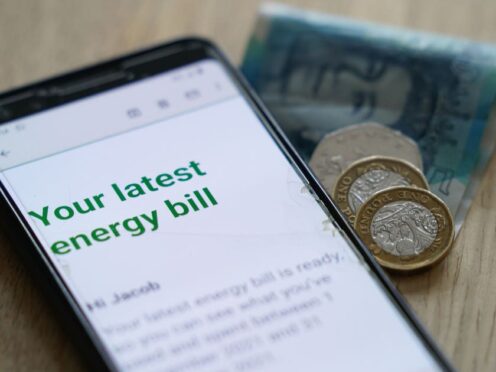
Ofgem is to consider a new “dynamic” price cap based on the time of day households use their energy, it has announced.
The regulator has launched a consultation on a range of options for the future of the price cap, including a “more dynamic cap” with “time-of-use dependent unit rates to encourage consumer flexibility”.
Ofgem said the increasingly renewables-dominated electricity sector would reward consumers for shifting the time of their energy consumption, which would in turn reduce costs for everyone.
As more households adopted time-of-use tariffs, it could become harder to retain a universal price cap that was suitable for everyone.
The introduction of half-hourly settlement from 2025 – when smart meters will record energy consumed every 30 minutes – is expected to lead to a growth in smarter time-of-use tariffs that reward customers for being more flexible in their energy usage, Ofgem said.

This would allow consumers to benefit from cheaper energy when renewable generation increases, such as when it is particularly windy or sunny.
Other options include a targeted cap which could be based on a variety of factors such as vulnerability, and more flexible, market-based price protections such as setting a limit between a supplier’s default tariff and tariffs available in the market, capping the margin suppliers are able to make, or replacing the cap with a ban on acquisition-only tariffs.
Ofgem said the price cap, along with the temporary ban on acquisition-only tariffs, had worked well to protect customers from the “loyalty penalty”, where customers on default tariffs paid higher prices, and from the worst of the recent volatile markets and wholesale price surges that were a result of the energy crisis.
We've launched a consultation on the future of the price cap.
The price cap must:💡Deliver a net-zero system that works for all consumers💡Build on what we have learnt 💡Evolve with the changing energy market so no consumer is left behind
Read more ➡️https://t.co/ykaISTad7d pic.twitter.com/m94svRDeG7
— Ofgem (@ofgem) March 25, 2024
It said energy retail markets were changing as increasing numbers of consumers changed their energy consumption and begin using electric vehicles, heat pumps and solar panels.
Tim Jarvis, Ofgem’s director general of retail and markets, said: “While the price cap played an important role in protecting consumers from the loyalty penalty that existed before its introduction, the energy market is changing as we move to net zero and we recognise the systems we have in place may need to change too.
“We’re looking in detail at the elements of the price cap that have worked well and the challenges we’ve identified in recent years, while also considering how a wide range of future consumers will use and pay for energy to make sure we develop the right measures that will protect and benefit consumers across the board.
“We will continue to work with government, industry, consumer groups, charities and the public on the future of pricing regulation. Our aim is ensure the market works for everyone.”
Simon Virley, head of energy and natural resources at KPMG UK, said: “The price cap was introduced five years ago as a temporary measure to protect ‘sticky’ customers, while the energy market was reformed.
“In the intervening years the price cap has worked in saving customers money, especially in recent years where we have seen unprecedented price rises.
“However, our recent research has shown that this has come at a price, with effective competition and innovation in the market suffering and switching levels falling off a cliff.
“As we look to what a future retail energy market looks like, it will be key to balance proportionate consumer protection with incentives for investment and innovation in a smarter energy system that benefits all consumers.”
Richard Neudegg, director of regulation at Uswitch.com, said: “Almost three years on from the start of the energy crisis, we’re yet to see a full return to competition in the market – and the price cap must bear some of the blame.
“We support Ofgem’s view that the price cap needs reform, given it has proved to have significant limitations.
“The devil will be in the detail, but it is vital that any changes made to the cap creates conditions to bring back better deals for consumers, and also offers targeted protections to the most vulnerable.”

Enjoy the convenience of having The Sunday Post delivered as a digital ePaper straight to your smartphone, tablet or computer.
Subscribe for only £5.49 a month and enjoy all the benefits of the printed paper as a digital replica.
Subscribe